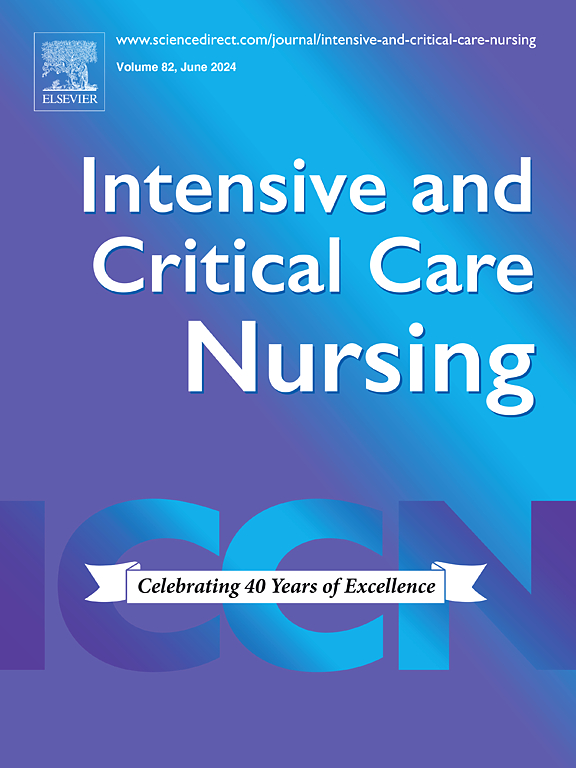Mobility in a cardiac surgery intensive care unit: A behaviour mapping study
IF 4.9
2区 医学
Q1 NURSING
引用次数: 0
Abstract
Purpose
Mobilization within 24 h post-cardiac surgery (CS) supports improved patient health outcomes. Despite being safe and recommended, it is unknown how much mobility takes place post-CS in the intensive care unit (ICU). Behaviour mapping was used to describe patterns of patients’ mobility in one CS ICU.
Materials and methods
Behaviour mapping gathers information on behaviour regularly over a time period. Two authors observed one CS ICU over a sixteen-hour period (0630–2230 h) on four days. Observers collected data on patients’ mobility mode, location, and support at 15-minute intervals. Data aggregated into four-hour time blocks is described.
Results
A total of 1342 observations were collected over four days: 487 of mode, 485 of location, and 370 of support. Sitting in a chair was observed 430 of 487 observations, 10-fold more than any other mode of mobility. Mobility within the ICU room was observed in 448 of 485 observations. Family support for mobility was observed in 178 of 370 observations. The most common time block for mobilization was from 0630 to 1030, with 488 of 1342 observations.
Conclusions
Research is required to support the integration of early mobility beyond sitting in a chair supported by more team members into local CS ICU clinical care.
Implications for clinical practice
The existence of early mobility protocols does not mean that they are operational in the CS ICU. Integration of these protocols into CS ICU clinical care requires collaboration among researchers and clinicians.
心脏外科重症监护病房的移动性:一项行为映射研究。
目的:心脏手术后24小时内的活动有助于改善患者的健康状况。尽管安全且被推荐,但目前尚不清楚cs后在重症监护室(ICU)有多少活动。行为映射用于描述一个CS ICU中患者的活动模式。材料和方法:行为映射在一段时间内定期收集行为信息。两位作者对一个CS ICU进行了为期四天的16小时(06:30 -2230小时)观察。观察员每隔15分钟收集患者活动方式、位置和支持的数据。数据汇总成四个小时的时间块描述。结果:在4天内共收集了1342个观测值,其中487个是模式观测值,485个是位置观测值,370个是支持观测值。在487项观察中,有430项是坐在椅子上的,是其他移动方式的10倍。485例观察中有448例观察到ICU病房内的活动能力。在370项观察中,有178项观察到家庭对流动性的支持。最常见的动员时间段是06:30至1030,1342次观测中有488次。结论:需要进行研究,以支持将早期活动整合到当地CS ICU临床护理中,而不是由更多的团队成员支持坐在椅子上。对临床实践的启示:早期活动方案的存在并不意味着它们在CS ICU中是可操作的。将这些方案整合到CS ICU临床护理中需要研究人员和临床医生之间的合作。
本文章由计算机程序翻译,如有差异,请以英文原文为准。
求助全文
约1分钟内获得全文
求助全文
来源期刊

Intensive and Critical Care Nursing
NURSING-
CiteScore
6.30
自引率
15.10%
发文量
144
审稿时长
57 days
期刊介绍:
The aims of Intensive and Critical Care Nursing are to promote excellence of care of critically ill patients by specialist nurses and their professional colleagues; to provide an international and interdisciplinary forum for the publication, dissemination and exchange of research findings, experience and ideas; to develop and enhance the knowledge, skills, attitudes and creative thinking essential to good critical care nursing practice. The journal publishes reviews, updates and feature articles in addition to original papers and significant preliminary communications. Articles may deal with any part of practice including relevant clinical, research, educational, psychological and technological aspects.
 求助内容:
求助内容: 应助结果提醒方式:
应助结果提醒方式:


